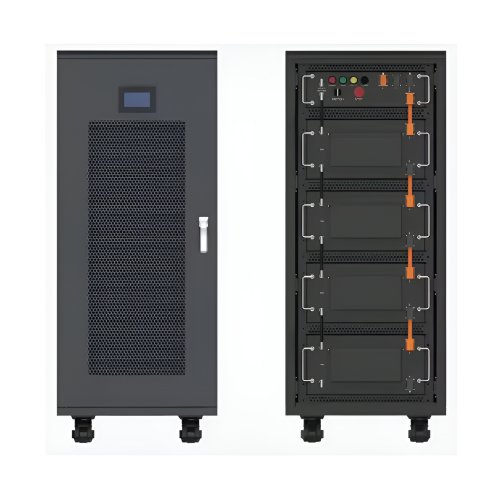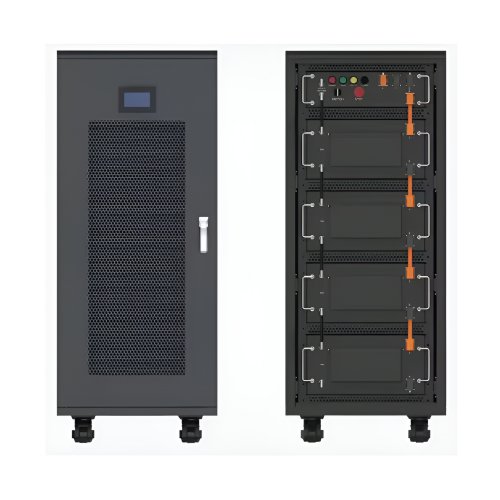Advances In Thermal Stability: Novel Materials, Characterization Techniques, And Future Directions
Thermal stability—the ability of a material to retain its structure, properties, and functionality at elevated temperatures—is a cornerstone property for a vast array of technologies. From the aerospace alloys that withstand the intense heat of atmospheric re-entry to the electrolytes in next-generation batteries and the active components in microelectronics, performance and longevity are critically dependent on resisting thermal degradation. Recent scientific progress has been multifaceted, yielding breakthroughs in material design, sophisticated characterization methods, and a deeper fundamental understanding of degradation mechanisms, paving the way for a new generation of high-temperature applications.
A significant frontier in enhancing thermal stability lies in the realm of nanostructured and two-dimensional (2D) materials. While nanomaterials often possess exceptional properties, their high surface-area-to-volume ratio can make them susceptible to coarsening, sintering, or structural collapse upon heating. Researchers have made considerable strides in mitigating this vulnerability. For instance, the thermal stability of perovskite solar cells, notorious for their degradation under heat and moisture, has been markedly improved by employing 2D/3D heterostructures. The incorporation of 2D perovskite layers acts as a protective barrier, suppressing ion migration and phase transition in the 3D absorber layer beneath, thereby significantly enhancing operational longevity at elevated temperatures (Grancini et al., 2017). Similarly, in catalysis, the sintering of metal nanoparticles on oxide supports is a primary deactivation mechanism. Advanced synthesis techniques now allow for the encapsulation of nanoparticles in porous oxide shells or their precise anchoring into specific sites on perovskite-type supports, dramatically reducing their mobility and preventing coalescence even under harsh reaction conditions (Jones et al., 2021).
Beyond new material synthesis, the accurate assessment of thermal stability has been revolutionized by advanced in situ characterization techniques. Traditional methods like thermogravimetric analysis (TGA) and differential scanning calorimetry (DSC) provide bulk information on weight loss or enthalpy changes but often lack atomic-scale resolution. The integration of in situ heating stages with transmission electron microscopy (TEM) and synchrotron X-ray diffraction has been a game-changer. In situ heating TEM allows for the direct, real-time observation of structural transformations, grain boundary movement, and defect evolution in materials under thermal stress. This provides unparalleled insights into the fundamental mechanisms of degradation, moving beyond mere observation of the outcome to understanding the process itself. For example, such techniques have been instrumental in observing the amorphous-to-crystalline phase transitions in novel high-entropy oxides and the dynamics of grain growth in nanocrystalline alloys, enabling a more rational design of microstructures for stability (Huang et al., 2022).
Perhaps one of the most transformative tools emerging in this field is the application of machine learning (ML) and computational modeling. Predicting the thermal stability of a new material, especially complex systems like high-entropy alloys (HEAs) or polymer composites, is immensely challenging due to the vast compositional and configurational space. ML models trained on existing experimental and high-fidelity simulation data can now predict melting points, decomposition temperatures, and phase stability with increasing accuracy. These models can identify non-intuitive compositional sweet spots that would be impractical to discover through trial-and-error experimentation. Furthermore, ab initio molecular dynamics (AIMD) simulations provide atomic-level insights into the initial stages of thermal decomposition, revealing weakest links in molecular structures and guiding the synthesis of more robust alternatives (Ward et al., 2018).
Looking toward the future, several promising directions are poised to define the next chapter of thermal stability research. The first is the accelerated discovery and development of ultra-high-temperature ceramics (UHTCs) and refractory composites for hypersonic vehicles and next-generation nuclear reactors. The focus here is not only on melting point but also on resistance to oxidation and ablation. Composites incorporating carbon nanotubes or graphene into ceramic matrices are showing promise in creating materials that are both tough and thermally stable.
Secondly, the field of polymer science is actively pursuing sustainable and stable polymers. The drive to replace conventional plastics with bio-based alternatives must reconcile often-poor thermal properties with performance requirements. Research into novel monomers, cross-linking strategies, and nanofillers like cellulose nanocrystals aims to create bioplastics that can withstand processing and service temperatures without compromising their green credentials.
Finally, the integration of AI and robotics into material labs will close the loop between prediction, synthesis, and testing. Autonomous labs can use ML-generated hypotheses to formulate new compositions, synthesize them, and subject them to high-throughput thermal stability screening, dramatically accelerating the innovation cycle.
In conclusion, the pursuit of enhanced thermal stability is evolving from a largely empirical endeavor to a sophisticated science driven by atomic-scale design, real-time characterization, and predictive computational power. The synergy between these disciplines is yielding materials capable of operating in ever more extreme environments, which will be fundamental to advancing technologies in energy, transportation, and electronics. The future of thermal stability research is not just about resisting heat but about engineering materials that thrive within it.
References:Grancini, G., et al. (2017). One-Year stable perovskite solar cells by 2D/3D interface engineering.Nature Communications, 8, 1568 4.Jones, J., et al. (2021). Thermally stable and regenerable platinum-tin clusters for propane dehydrogenation.Nature Materials, 20, 1214–1220.Huang, E. W., et al. (2022). In-situ TEM observation of microstructural evolution in a nanocrystalline alloy under thermal stress.Acta Materialia, 231, 117868.Ward, L., et al. (2018). A machine learning approach for the prediction of formability and thermal stability in refractory high-entropy alloys.JOM, 70(10), 2210-2216.
Customized/OEM/ODM Service
HomSolar Supports Lifepo4 battery pack customization/OEM/ODM service, welcome to contact us and tell us your needs.


HomSolar: Your One-stop LiFePO4 Battery Pack & ESS Solution Manufacturer
Our line of LiFePO4 (LFP) batteries offer a solution to demanding applications that require a lighter weight, longer life, and higher capacity battery. Features include advanced battery management systems (BMS), Bluetooth® communication and active intelligent monitoring.

Customised Lithium Iron Phosphate Battery Casing
ABS plastic housing, aluminium housing, stainless steel housing and iron housing are available, and can also be designed and customised according to your needs.

HomSolar Smart BMS
Intelligent Battery Management System for HomSolar Energy Storage System. Bluetooth, temperature sensor, LCD display, CAN interface, UART interface also available.


Terminals & Plugs Can Be Customized
A wide range of terminals and plugs can be customised to suit the application needs of your battery products.

Well-designed Solutions for Energy Storage Systems
We will design the perfect energy storage system solution according to your needs, so that you can easily solve the specific industry applications of battery products.



About Our Battery Cells
Our energy storage system products use brand new grade A LiFePO4 cells with a battery lifespan of more than 4,000 charge/discharge cycles.



Applications in Different Industries
We supply customized & OEM battery pack, assemble cells with wiring, fuse and plastic cover, all the cell wires connected to PCB plug or built BMS.
Applications: E-bike, Electric Scooter, Golf Carts, RV, Electric Wheelchair, Electric Tools, Robot Cleaner, Robot Sweeper, Solar Energy Storage System, Emergency Light, Solar Power Light, Medical Equipment, UPS Backup Power Supply.
We can provide you with customized services. We have the ability to provide a vertical supply chain, from single cells to pack/module and to a complete power solution with BMS, etc.


HomSolar (Shenzhen) Technology Co., Ltd
























